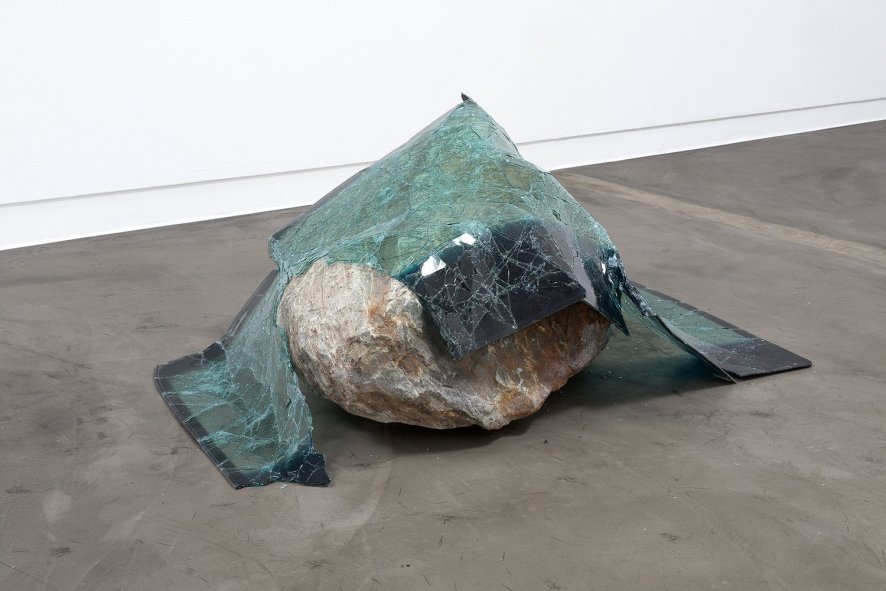rhymes of goodbye, 2011
Rock, broken car wind screen
Rock: 100 x 70 x 47 cm (at widest points)
Exhibitions
2015, Anya Gallaccio, Museum of Contemporary Art San Diego, US
2011, Highway, Annet Gelink Gallery, Amsterdam, NL
''On the bare floor of the art room a boulder is sitting covered by a broken car window - made of safety glass which remains glued together because of its internal strengthening. The window lies like a wrinkled blanket draped over the boulder. I was told that the boulder originates from southern California. In that neighborhood, along the highway, one has also found a piece of a car window. The work is called: rhymes of goodbye. It was recently made by Anya Gallaccio, a result of a long trip through the breath-taking landscape of the United States' South-West. I can imagine her, stopping on a deserted road, walking into the dry dusty land and then finding there among smaller stones and grit this somewhat bigger stone. A dry hot wind was blowing under a high sky. Something in the form of it makes the thing look like a figure.In any case, she cast the smooth stone in bronze. Since that bronze boulder (called forever changes) is hollow and also smoothly shines, that volume looks mysteriously lighter than the stone boulder (a kind of quartz). Because of that simple transformation from stone into bronze (a fragile alloy of copper and tin) the thing now looks like a skin and the casing of a volume. The boulder itself is hard and compact, but even that hardness is not unchanging. In another material the form looks again different and lighter. Even as a negative the boulder keeps its own form character. The work remind me to remind me is a print of the same stone in the sand from the desert where it was found and then mixed with fine-grain concrete and cast. The print reminds us of the stone that was earlier.
The original boulder is of a craggy form but also round and sloping and even cuddly. It is apparently a piece of rock that was not abruptly broken out of a cliff face as a result of an explosive force. There are no sharp corners and edges. It rather seems as if the thing has come rolling along, as it had been moved by volcanic activity or else after an earthquake. In any case the rounding off of the piece of stone indicates that it has been moving rather often. A rolling stone gathers no moss is a saying (or perhaps a song). This is hence a traveled stone that has not been sitting still - a piece of stone with a mysterious history that you could imagine just by looking at it.'' (Rudi Fuchs, 'Kijken Onpeilbaar', De Groene Amsterdammer, 29-09-11)

